Moving from Microsoft Outlook to Lotus Notes 8.5.3 (Simple)
The transition from Microsoft Outlook to Lotus Notes 8.5.3 can be challenging. This recipe will help you to configure Lotus Notes in a way that can make this transition a little easier. We will look at mail, calendar, and contacts tips to enhance your Lotus Notes 8.5.3 experience.
Getting ready
If you are new to IBM Lotus Notes 8.5.3 and are moving from Microsoft Outlook, you will need to have your Lotus Notes client installed and connected to your mail file.
How to do it...
Here you will see how to configure and access IBM Lotus Notes 8.5.3, in a way that will be familiar to you as a former Microsoft Outlook user.
The default order for mail to be displayed in the Inbox view in Lotus Notes 8.5.3 is by dates in descending order. To change this to be more like Outlook, and make new mail appear at the top of your inbox, click on the Date column in your Inbox and have the arrow point up. Now all new mail will appear at the top of your Inbox.
How it works...
In Microsoft Outlook, you can have Favorite Folders that will stay at the top of your folders list. This does not exist in Lotus Notes. In Notes, the folders sort alphabetically. If you want a folder to appear at the top of the list, consider adding a number, such as 1 in front of the name. To move a folder down the list to the bottom add a letter Z.
To search all the mail in your mail file, you can use the All Documents view. as shown in the following screenshot:
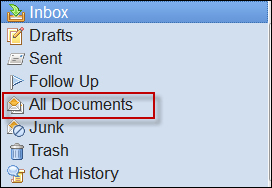
We can also search for the mail using the search bar as shown in the following screenshot:

Mail can be flagged for follow up. To do this, select the message to be flagged and click on the flag button in the tool bar. You can also right-click on the message and select Quick Flag.

This will then add the message to the Follow Up pane. In the Follow Up pane you can remove the flags when you need to.
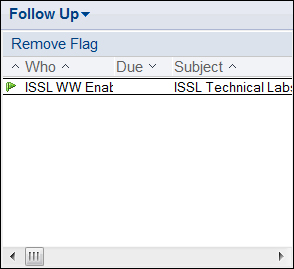
There's more...
The calendar can be made to look like the calendar in Outlook as well.
Calendar
In Outlook you could set the hours that you are available for meetings. This way when people try to invite you to meetings, they can see when you are free. In Outlook this is called the Scheduling assistant. To do this in IBM Lotus Notes 8.5.3, navigate to your File | Preferences | Calendar and To Dos. Then go to the Scheduling tab. Place a check mark in the days of the week that you will be available and then set the times.
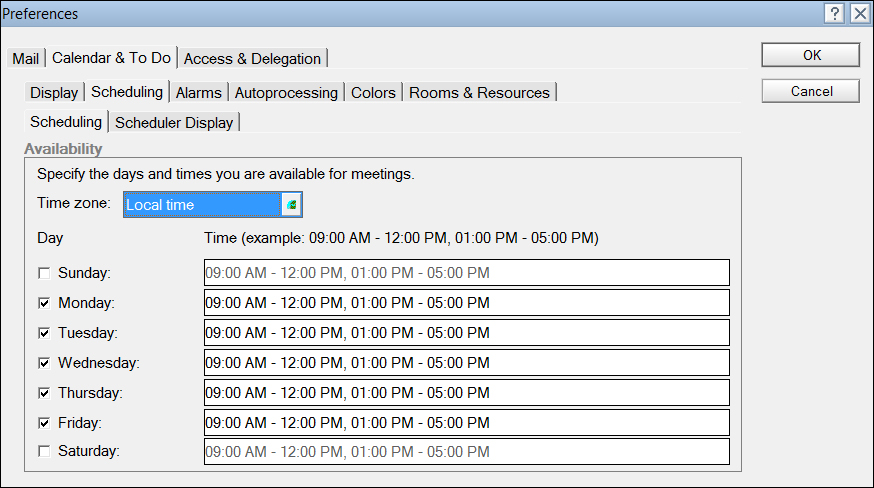
To send another user a screenshot of your calendar, you can do the following:
Go to your Calendar view and navigate to File | Print. Select Print Calendar to a document. You can choose what style you want and which week of your calendar to send, as shown in the following screenshot:

Once you have selected what you want to send, click on the Preview button. This will bring up your calendar in the format you selected. To send this press the Forward button.

When you do this only your calendar entries will appear. Calendars that you have added or Calendar feeds, will not appear in the e-mail.
Contacts
The behavior of your recent contacts can be adjusted to help with type ahead when you are addressing an e-mail or a calendar invite. To do this, open your contacts and look for the recent contacts view. If you do not see this view, it is possible that your administrator has turned this view off.
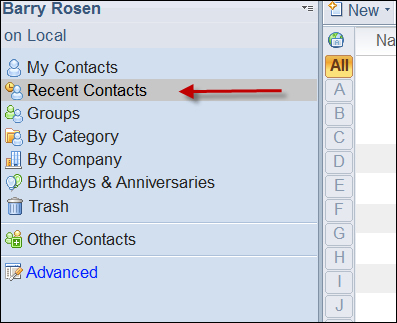
The Contacts preferences is where you can control how recent contacts behave. To turn them off you can do so from here.
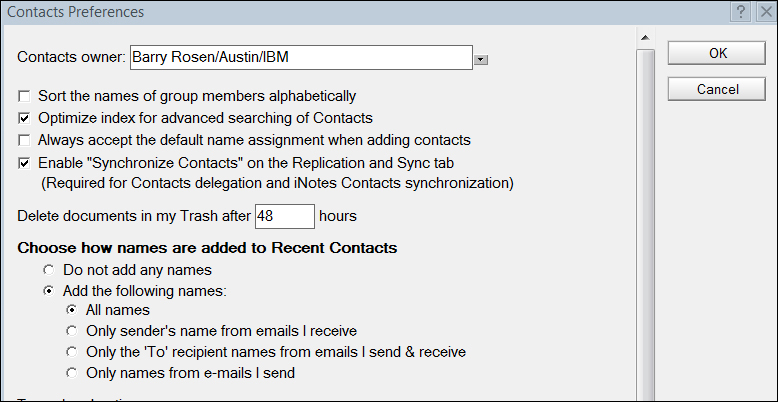
If you have saved your contacts in an Excel spreadsheet, you can import them. To do this, you must open the Excel spreadsheet and save them in the vCard format. You can then import the vCards into your Lotus Notes contacts. Open your contacts and then navigate to File | Import contacts and select the files to import.
If you want to import contacts in an Excel spreadsheet as a group, you can do this in a similar manner. Follow the same instructions as discussed earlier. Then in your Lotus Notes contacts, select all of the contacts you want to add to a group. Navigate to More | Copy into a new Group.
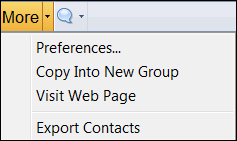
Name the group you have created. Next time you want to send mail or a calendar invite to the group, just type in the name.
You can also send another user to a group that you have created in your contacts. Go to your Groups view in your contacts.
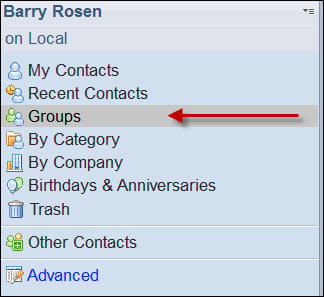
Then select the group that you want to send, and click on the Send button.

Using the built-in Help
Dynamic help is available in most of the areas of the Notes client. To access the Dynamic Help press F1 and navigate to Help | Dynamic Help, or click on the question mark on any dialog box or properties box. Doing this will bring up the help for the area you are currently in. Following is an example of what you would see when accessing the Dynamic help from your inbox:
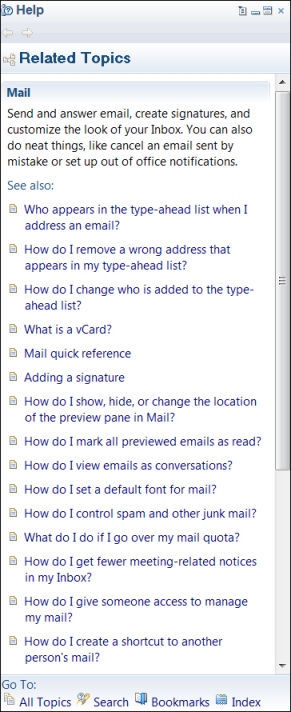
You can use this feature to help out yourself whenever you need it. As you can see, there are several changes you can make to your Lotus Notes 8.5.3 client to ease the transition from Microsoft Outlook.



